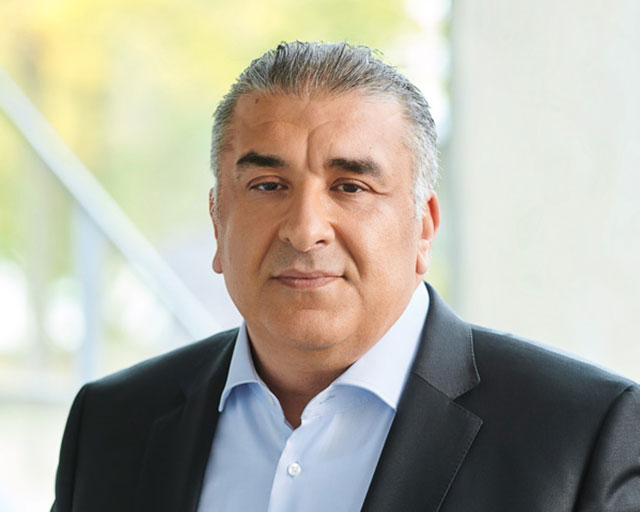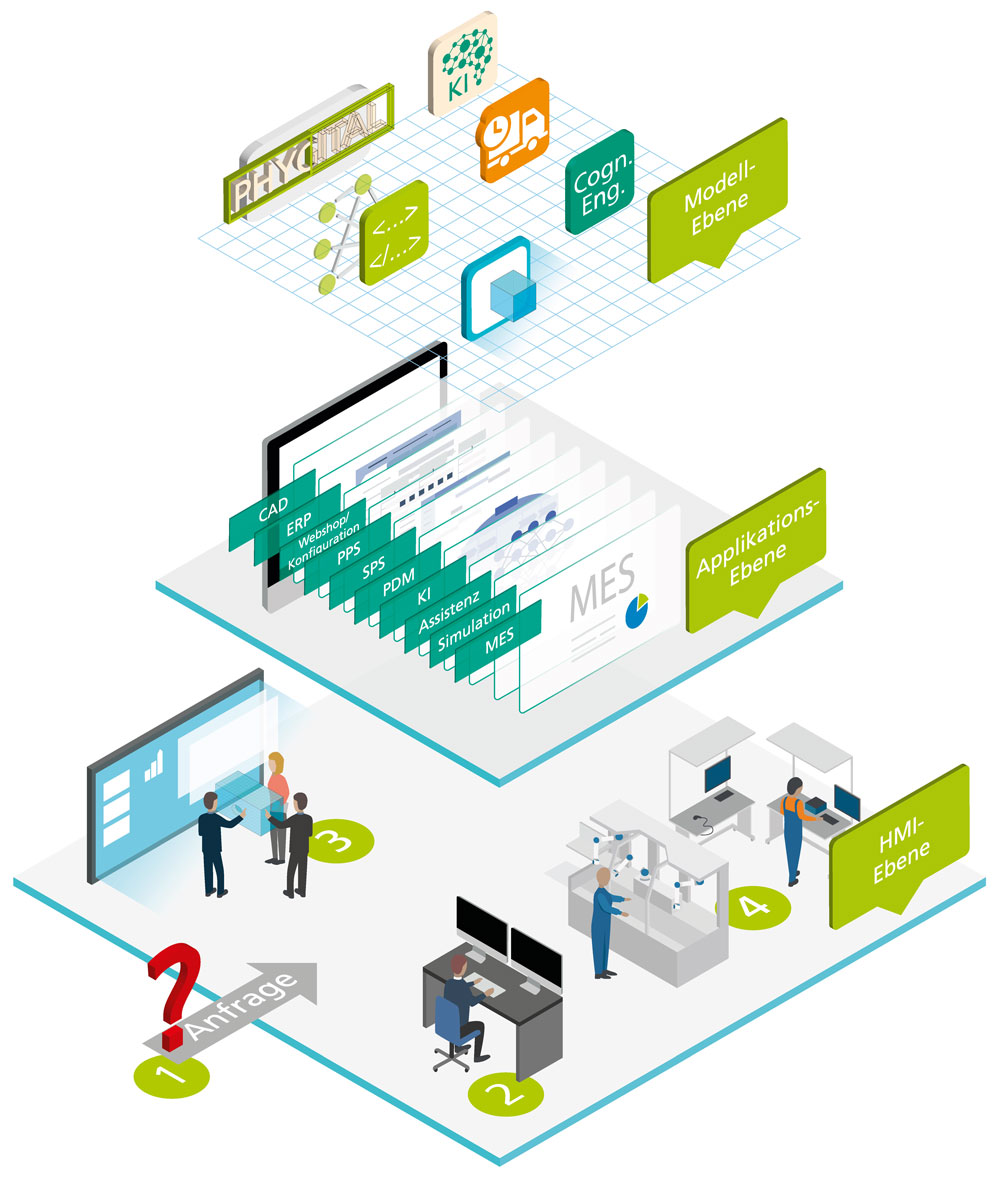
Efficiently orchestrating system design
ASE — Advanced Systems Engineering

The challenge
The most important characteristic of the first motor vehicle built by Carl Benz in Mannheim in 1885 was its ability to move under its own power. The automobile has undergone a wide-ranging technological evolution over the years, while remaining what it always was, a relatively autonomous machine. This is yet another thing that is set to change as part of the digital transition as individual cars become components of a vast data system. In short, cars will become integrated elements of the world they traverse.
From essential software updates to finding a parking spot in a smart city, the automobile of tomorrow will continuously generate, process, save and send information on the way it is used. This data will mainly be used to feed its “digital twin” – a digital representation of the actual car in the virtual world. Car manufacturers are already using this technology to optimize their vehicles. Cars are able to recognize and report the need for a service, for example. And that's only the beginning. From car sharing to autonomous driving, the future of mobility will be based on a mix of centralized and decentralized control.
The car will be just one small stone in this vast mosaic of data. By enabling products to communicate, digitalization has the potential to reconstruct entire markets from the ground up – from production, to agriculture, to the manufacture of medical equipment. “Products that function in isolation become part of a network of product service systems,” explains Mehmet Kürümlüoglu, head of the Advanced Systems Engineering team at Fraunhofer IAO. “The tractor of the future will not just plow a field. It will also use AI to calculate the optimal route.” In this way, a complex, networked system of mechanics, electronics, software and services is taking the place of the traditional agricultural machine.
The task
When products are integrated into systems, developers have to think in entirely new ways. “Up until now, the product was designed first, and then the IT infrastructure was built around it. In the future, well integrated, interdisciplinary development teams will design and develop all system components on an equal basis,” Kürümlüoglu explains. This is a challenge that requires a lot of interdisciplinary cooperation. An additional challenge is the integration of existing products into new infrastructures. Previously, every product and every discipline had its own (IT) systems, i.e. standalone technological solutions. These individual solutions now need to be converted into overarching systems as part of the digitalization process. “The flow of information has to function seamlessly across all of the systems involved, and over the entire life cycle of the product,” says Kürümlüoglu.
This is a task the Advanced Systems Engineering research program at Fraunhofer IAO is already working on. Here, researchers are creating the foundations for the efficient development of individual product-service systems that integrate into overarching systems. This will make it easier for companies to take the first complex, but necessary step into the digital world. Digitalization, system complexity, the emergence of disruptive new business models, mass customization and increasing volatility are forcing developers to respond to market needs with new products and solutions at a faster and more flexible pace than ever before. This requires efficient, integrated planning and control of products, services, processes and resources, as enabled by advanced systems engineering.
The solution
Concretely, researchers are addressing the question of how companies can develop new products as flexibly and efficiently as possible. “We help our clients reduce and overcome complexities,” explains Benjaman Schneider from the Advanced Systems Engineering team. Among the technologies Fraunhofer IAO wants to make accessible to its clients are: digital twins, model-based systems engineering (MBSE), product life cycle management (PLM), software-defined manufacturing (SDM), smart production models, value-stream-oriented design of products and production systems, information and data flows in product creation, assistance systems, artificial intelligence (AI), collaborative spatial visualization and smart system configuration.
To showcase the potential applications of advanced systems engineering to companies, Fraunhofer IAO has implemented a Cognitive Engineering and Production Lab, where the principles of advanced system engineering are presented and explained using demo systems based on the underlying technology. The technology demo system is represented here by a gearbox that has been expanded to create a networked, mechatronic system. In addition, the institute has designed a mobile plug-in laboratory to explain the various technology and methods directly to clients on site. The laboratory is housed in a self-contained unit with the flexibility to be set up at different locations. “First of all, we want to bring to life the many possibilities of advanced systems engineering,” Schneider explains. “Then as part of a second step, we can work with our clients in the laboratories to develop tailor-made solutions for their specific use cases.”
We develop tailor-made solutions.

“Digitalization and Industry 4.0 pose big challenges for small and medium-sized companies in particular. On one hand, conventional products are evolving to become part of complex, integrated product-service systems. Yet, changing market needs require products to be developed ever faster and more efficiently. Our team, which consists of experts from the fields of mechanical engineering, system development and technology management, develops methods and technologies to support companies in dealing with the complexities that arise. Our Cognitive engineering lab and our Mobile plug-in lab bring new technologies to life. They offer companies the opportunity to start working on their own use case and to develop tailor-made solutions for this specific use case.”
